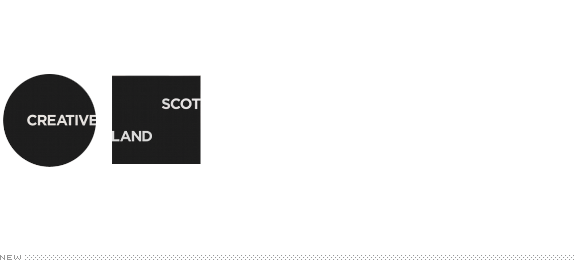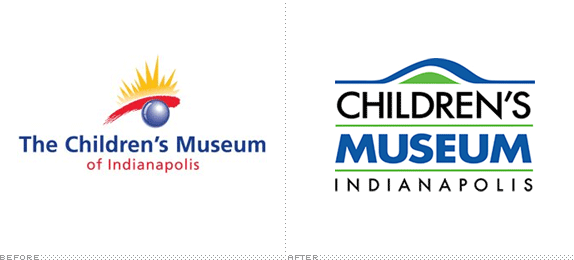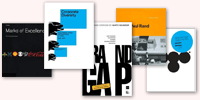
Opinion BY Armin
National Geometry of Australia

Established in 1967 by the Australian Government, the National Gallery of Australia (NGA) in the capital city of Canberra, houses over 100,000 works across four points of national interest: Australian art, Aboriginal & Torres Strait Islander art, Asian art and International art. In 2006 NGA announced plans for a comprehensive expansion of their building after receiving a $92.9 million funding from the government that will help it accommodate the now 140,000 works in the collection. Slated for completion this winter, the NGA has taken the opportunity to introduce a new logo as well, designed by Naked Communications.
Continue reading this entry

DATE: Aug.24.2010 POSTED BY: Armin
POSTED BY: Armin CATEGORY: Culture
CATEGORY: Culture  COMMENTS:
COMMENTS:

TAGS: acronym, australia, geometric, sans serif,

Opinion BY Armin
The Land of Scot gets Creative

Established on July 1, 2010, Creative Scotland is the new representative body for the “arts, screen and creative industries” in Scotland. “We think,” states the website, “Scotland’s arts, culture and creative industries are worth shouting about. We’ll lead the shouting.” Creative Scotland replaces two institutions that previously represented the arts, Scottish Screen and the Scottish Arts Council. (The latter might sound familiar to some as it was, supposedly, the logo that Quark ripped off back in 2005). The identity was designed by Edinburgh-based Leith who were paid between £25,000 and £35,000 depending on the source and because the money came from public funds, the public is entitled to their opinion. Nuggets of criticism include “rubbish,” “wretched,” and “ugly.”
Continue reading this entry

DATE: Aug.19.2010 POSTED BY: Armin
POSTED BY: Armin CATEGORY: Culture
CATEGORY: Culture  COMMENTS:
COMMENTS:

TAGS: leith, sans serif, scotland,

Opinion BY Armin
A More Royal Royal Opera House

Nestled in bustling Covent Garden, the Royal Opera House is home to The Royal Opera, The Royal Ballet and the Orchestra of the Royal Opera House. In its third structural incarnation since 1732 — two previous buildings were burned in fires in 1808 and 1856 — the Royal Opera House is a preeminent international performing arts venue but, unfortunately, the same couldn’t be said of its crest, which looks like it has survived its own set of fires.
Continue reading this entry

DATE: Aug.18.2010 POSTED BY: Armin
POSTED BY: Armin CATEGORY: Culture
CATEGORY: Culture  COMMENTS:
COMMENTS:

TAGS: crest, illustration, royal opera house, sans serif, someone,

Opinion BY Armin
Globally Speeching

On February 2010, the General Assembly of the United Nations adopted resolution 64/134: “Proclamation of 2010 as the International Year of Youth: Dialogue and Mutual Understanding.” The International Year of Youth (IYY) will begin on August 12, 2010, launching a global initiative to engage the kidz and not just to get them off their Playstations but to “harness the energy, imagination and initiative of the world’s youth in overcoming the challenges facing humankind, from enhancing peace to boosting economic development.” Not an easy task, but one with a deadline of August 11, 2011 so there is plenty of time. The logo for IYY was introduced last month.
Continue reading this entry

DATE: Aug.03.2010 POSTED BY: Armin
POSTED BY: Armin CATEGORY: Culture
CATEGORY: Culture  COMMENTS:
COMMENTS:

TAGS: sans serif, speech bubble, united nations,

Opinion BY Armin
Manufacturing Happiness

Already three months active and remaining open until the end of October, the 2010 Shanghai World Expo has attracted as many as 500,000-plus visitors (or as low as 80,000-plus) per day with pavilions representing 195 countries, all working under the theme of “‘Better City, Better Life,’ representing the common wish of the whole humankind for a better living in future urban environments.” One pavilion — check Flickr for images of others — that has taken this theme to extreme heights is Latvia, who is treating visitors to its Technology of happiness, a three-story structure wrapped in 100,000 colorful, transparent, 15 ×15-centimeter plastic plates that houses a vertical tunnel that shoots people up in the air with, you bet, happiness. The Latvia pavilion even has its own happy identity, created by Latvian design firm Asketic.
Continue reading this entry

DATE: Aug.02.2010 POSTED BY: Armin
POSTED BY: Armin CATEGORY: Culture
CATEGORY: Culture  COMMENTS:
COMMENTS:

TAGS: asketic, flexible identity, latvia, world expo,

Opinion BY Armin
Most Boring Children’s Museum in the World

Spanning 472,900 square feet and welcoming over one million visitors each year, The Children’s Museum of Indianapolis (CMI) is the largest children’s museum in the world, and one of the oldest, having opened in 1925. To celebrate their 85th anniversary and hopefully usher in even more visitors and tourists, CMI introduced a new identity in mid-July, designed by Marmillion + Company, a communications firm that has been working with the museum for more than a decade.
Continue reading this entry

DATE: Jul.02.2010 POSTED BY: Armin
POSTED BY: Armin CATEGORY: Culture
CATEGORY: Culture  COMMENTS:
COMMENTS:

TAGS: futura, marmillion and company,

Opinion BY Armin
Follow-up: AOL, Round 2

Six months after rebooting their identity and to coincide with their 25th anniversary celebrations, AOL has unleashed its “2nd Collection” of logos and animations with help from designers, illustrators and animators around the world, with direction by Wolff Olins. To consolidate this effort, AOL has launched AOL Artists, a repository of all the contributors and snippets of their work, a fairly generous move to acknowledge these artists’ work and give them some additional exposure. AOL Artists also introduces “Project on Creativity,” a year-long celebration that highlights one creative icon — Chuck Close being the inaugural one — and also awards twenty-five scholarships, each of $25,000, to upcoming talent. Finally, a new corporate site for AOL is now live.
Continue reading this entry

DATE: Jun.02.2010 POSTED BY: Armin
POSTED BY: Armin CATEGORY: Culture
CATEGORY: Culture  COMMENTS:
COMMENTS:

TAGS: aol, flexible identity, wolff olins,

Opinion BY Armin
GLAAD Gets Louder

While still light years away from fair portrayal in the media as well as full social and cultural acceptance, the gay, lesbian and transgender community have had a strong ally the last 25 years that has positively broadened the views of the public in The Gay & Lesbian Alliance Against Defamation (GLAAD). Established in New York in 1985, GLAAD “amplifies the voice of the LGBT community by empowering real people to share their stories, holding the media accountable for the words and images they present, and helping grassroots organizations communicate effectively.” Working from that key word, amplifying, Lippincott worked pro-bono to create their new identity, which was introduced this past March 13 at the 21st Annual GLAAD Media Awards in New York.
Continue reading this entry

DATE: Apr.19.2010 POSTED BY: Armin
POSTED BY: Armin CATEGORY: Culture
CATEGORY: Culture  COMMENTS:
COMMENTS:

TAGS: Color Variations, Enterprise IG, Icon, Lippincott, Pro-bono, Sans Serif,

Opinion BY Sam Becker
Museums are for Squares

The Museum of Science and Industry, situated on Chicago’s storied Lake Shore Drive, is a true city landmark. I grew up visiting the museum with my grandmother and can vividly remember how interactive and engaging the exhibits were. To this day, it’s the only museum I know of where you can watch actual chickens being being born any day of the week.
Continue reading this entry

DATE: Apr.05.2010 POSTED BY: Sam Becker
POSTED BY: Sam Becker CATEGORY: Culture
CATEGORY: Culture  COMMENTS:
COMMENTS:

TAGS:

GUEST REVIEW BY Kosal Sen POSTED BY Brand New
This Just in: History is Coming Back… Sort of

Before it closed down for renovations in 2009, to reopen in 2011, the Atwater Kent Museum of Philadelphia suffered from lack of exposure. A quick look at the original website reveals all you need to know about the old brand. The brutish colors and default appearance reveal a small organization without much concern for engaging the audience. Compared to the other kid-friendly museums in Philadelphia like the Franklin Institute (whose original home was actually the Atwater Kent building), the Atwater Kent Museum is about as exciting as a textbook. Having visited the museum once in my elementary school class trips, I remember it as an old, austere space that contained just bunch of artifacts. Change was overdue.
Continue reading this entry

DATE: Mar.08.2010 POSTED BY: Brand New
POSTED BY: Brand New CATEGORY: Culture
CATEGORY: Culture  COMMENTS:
COMMENTS:

TAGS:





























